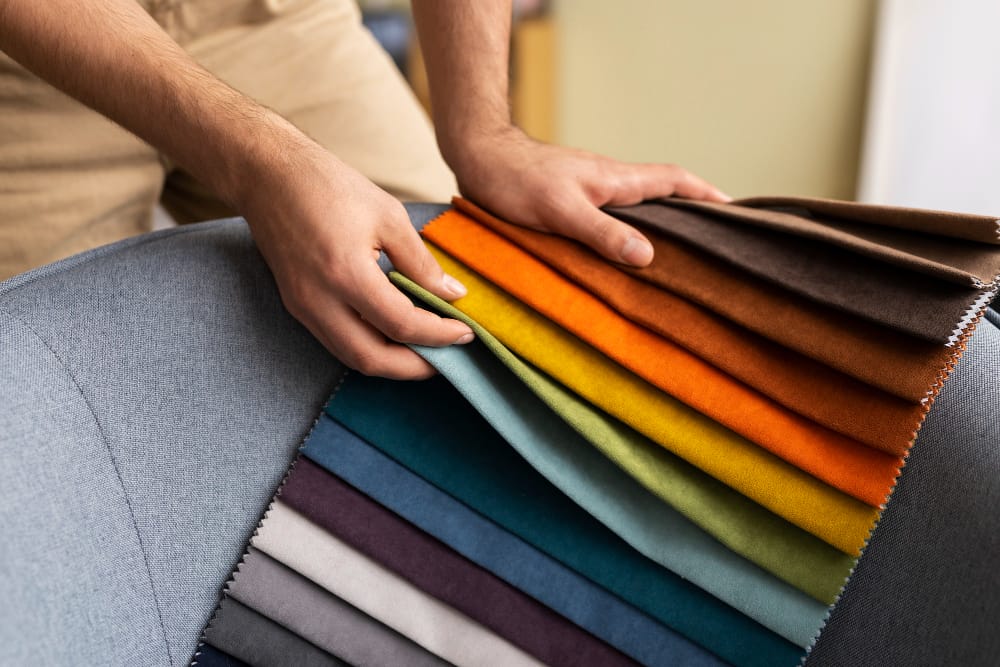Home » Quilted Fabric
Unfolding the Layers: The Comprehensive Guide to Quilted Fabric
Quilted fabric has been a staple in the textile industry for centuries, known for its unique construction and versatility. This special type of fabric is created by stitching together layers of fabric and padding, resulting in a material that is not only visually appealing but also highly functional. In this comprehensive guide, we will delve into the history, craftsmanship, types, uses, care, and future trends of quilted fabric.

The History and Evolution of Quilted Fabric
The lineage of quilted fabric stretches deep into the annals of time, originating from a necessity for warmth and evolving into a canvas for artistic expression. Its journey begins in ancient civilisations, where it served as armour, bedding, and clothing. Quilted fabric’s practicality in providing insulation and protection made it indispensable in the daily lives of our ancestors. As centuries passed, its role transitioned from purely functional to a symbol of craftsmanship and aesthetic appeal.
During the medieval period, Europe saw quilted fabric ascend to a symbol of affluence among the nobility. This era marked a significant evolution in the art of quilting, with artisans experimenting with various materials, patterns, and stitching techniques to create elaborate designs. The Renaissance further enriched quilting, introducing detailed storytelling through fabric, a testament to the era’s devotion to art and culture.
The Industrial Revolution brought about profound changes in the production of quilted fabric, making it more accessible to the masses. Innovations in textile manufacturing allowed for quicker production while maintaining quality, heralding a new age where quilted fabric could be enjoyed by all strata of society. This period also saw the introduction of new synthetic materials, expanding the versatility and use of quilted fabric.
In recent history, the 20th century witnessed a resurgence of interest in quilting, with movements such as the Arts and Crafts movement emphasising handmade quality and traditional techniques. Today, quilted fabric seamlessly blends its rich heritage with contemporary designs and technologies, standing as a versatile material that continues to captivate and inspire across various applications, from fashion to home décor. Its evolution is a testament to human ingenuity and the enduring appeal of quilted fabric in our lives.
The Art and Craftsmanship of Making Quilted Fabric
The construction of quilted fabric embodies a fusion of artistry and meticulous craftsmanship. This process involves intricately stitching together multiple layers – typically consisting of a top fabric, a layer of padding or wadding, and a backing fabric. Each layer plays a crucial role, with the outer layers providing aesthetic beauty and the inner padding offering warmth and texture. The choice of stitching patterns is pivotal, as it defines the final appearance and texture of the quilted fabric. These patterns range from simple, straight lines to complex, ornate designs, each requiring a steady hand or precise machine control to execute flawlessly.
Quilting can be undertaken by hand or machine, with each technique imparting its unique signature on the finished product. Hand quilting, revered for its traditional appeal and personal touch, allows for intricate detail and is often considered a labour of love. In contrast, machine quilting offers a more time-efficient method, enabling the creation of durable and uniform stitches. However, regardless of the method employed, the quilter’s skill and creativity are paramount in bringing the fabric to life.
The evolution of quilting techniques over time has introduced a variety of tools and materials, ranging from specialised needles and threads to advanced sewing machines designed specifically for quilting. These innovations have expanded the possibilities for quilters, allowing them to push the boundaries of traditional quilting and explore new dimensions of creativity. Whether through the exploration of new patterns or the incorporation of modern materials, the art of making quilted fabric continues to evolve, driven by a blend of tradition and innovation.

Types of Quilted Fabric and Their Characteristics
Quilted fabric manifests in an array of styles, each distinguished by its construction, appearance, and application. Amongst the diverse types, patchwork quilts stand out for their intricate assembly of varied fabric pieces, meticulously stitched together to form a cohesive pattern. This type not only showcases the quilter’s skill but also the rich tapestry of stories that each piece of fabric may hold. On the contrary, wholecloth quilts present a canvas of uniformity, crafted from a single piece of fabric. Here, the artistry is channelled through the quilting itself, where the stitches create the design, offering a subtler yet equally mesmerising aesthetic.
Quilted garments incorporate this textile art into wearable forms, transforming ordinary clothing into items laden with warmth, texture, and depth. These pieces often serve a dual purpose of style and functionality, especially in cooler climates where the additional layers provide insulation.Another noteworthy mention includes structured quilts, which are engineered to offer more robust forms for items such as bags and upholstery. The quilting in these instances not only contributes to the visual appeal but also enhances durability and support, making them ideal for everyday use. Each variant of quilted fabric brings its own unique qualities to the table, from the homely charm of a hand-quilted bedspread to the chic sophistication of a quilted jacket. Understanding these distinctions allows for a deeper appreciation of quilted textiles and informs their selection for specific projects, ensuring that the fabric’s attributes are perfectly aligned with its intended purpose.
Quilted Fabric in Fashion and Home Décor
Quilted fabric has carved a niche for itself within the realms of fashion and home décor, showcasing its ability to blend aesthetic appeal with practicality. In the fashion industry, quilted textures have transcended beyond the traditional puffer jacket, venturing into haute couture with quilted dresses, skirts, and even elaborate evening wear. Designers have embraced this fabric for its dimensional depth and comfort, utilising its padded nature to add a tactile quality to garments. Quilted handbags and accessories, including shoes and belts, have also gained popularity, elevating everyday items into statement pieces with added luxury and sophistication.

In the sphere of home décor, quilted fabric introduces a layer of cosiness and visual interest to interiors. It finds its place in bespoke bedspreads that promise warmth and comfort, and in scatter cushions that add a pop of texture to sofas and chairs. Quilted wall hangings and tapestries serve as artful expressions, marrying functionality with aesthetic charm, while quilted upholstery brings durability and a soft, inviting touch to furniture. The fabric’s adaptability allows for a seamless integration into various design styles, from modern minimalist to rustic farmhouse, demonstrating its enduring appeal in enhancing living spaces. Its usage in home accessories extends to practical items such as insulated oven gloves and table runners, showcasing the fabric’s versatility. Through thoughtful incorporation, quilted fabric enriches fashion ensembles and home environments alike, testament to its timeless nature and enduring versatility.